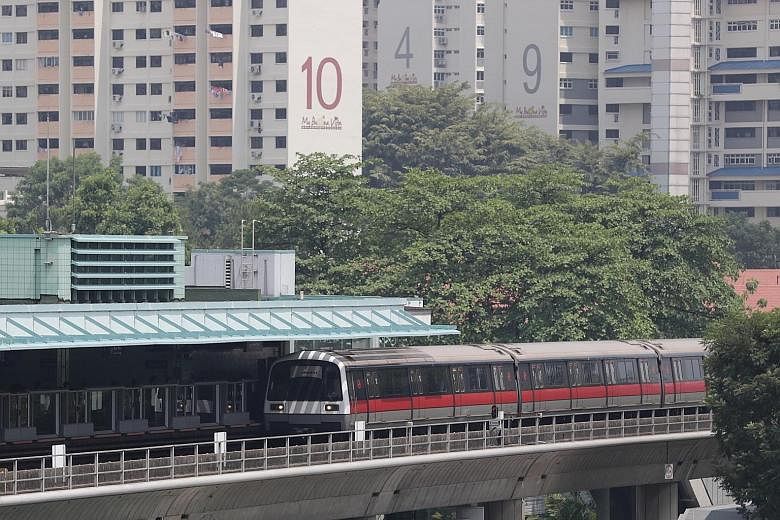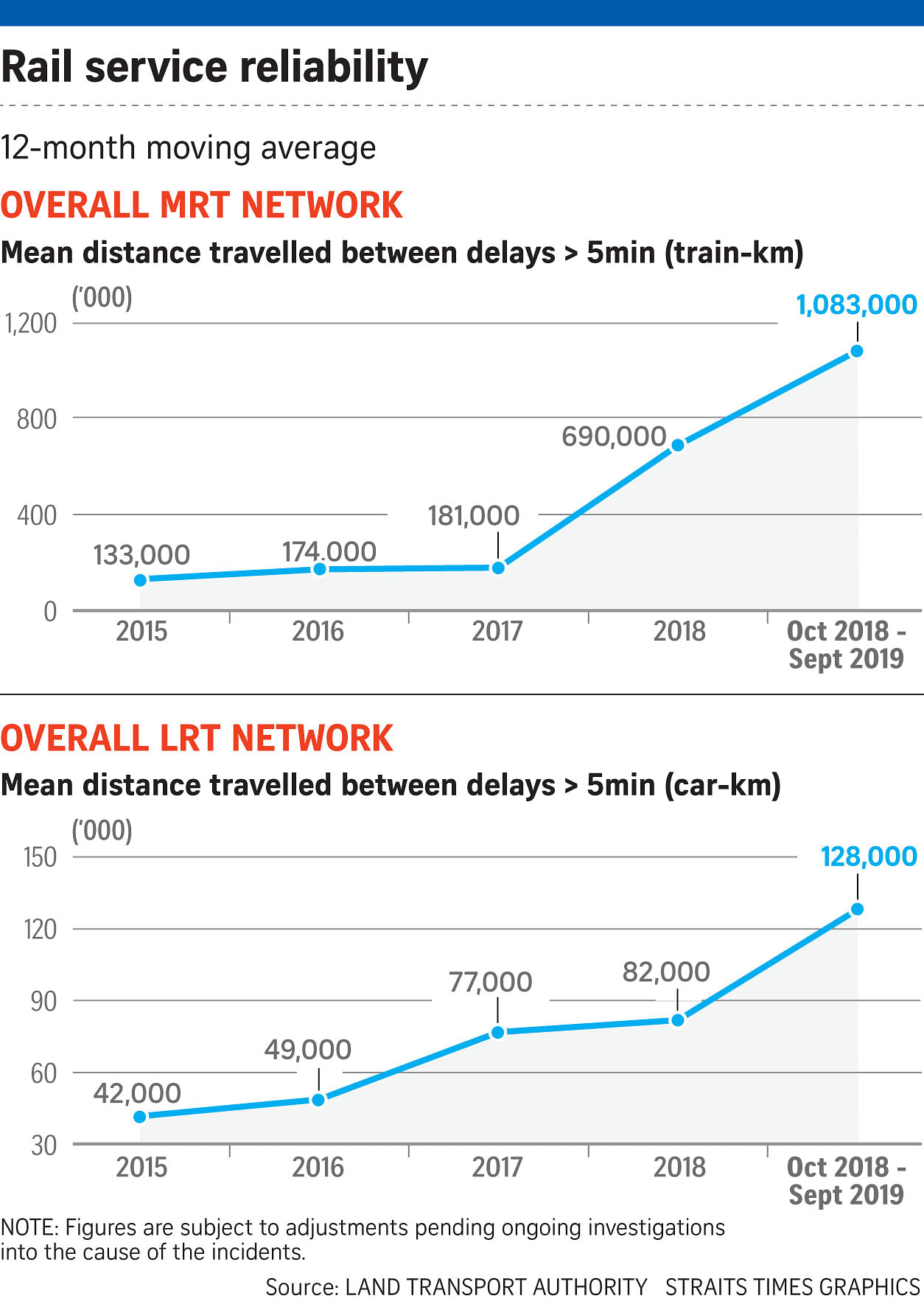The Republic's rail network continued to improve in the first nine months of this year, with train-km between delays breaching the one million mark.
On the whole, in the first three quarters of this year, the MRT system clocked 1.08 million train-km between delays of more than five minutes. This is up from the 955,000 train-km seen in the first six months of this year.
The latest 12-month moving average from the Land Transport Authority (LTA) showed the oldest line - which was extensively renewed in recent years - posting the best results.
The three-decade-old North-South Line clocked more than 1.43 million train-km between delays, down slightly from 1.44 million train-km in the first six months.
The runner-up was the North East Line (NEL) with 1.38 million train-km between delays, down drastically from 4.14 million train-km in the first half. The Straits Times understands that this is because the NEL is a short line, where even a single incident would affect its performance.
The East-West Line was third with 1.05 million train-km covered between delays, up significantly from 693,000 train-km.
Newer lines - Circle and Downtown - came in with 900,000 plus train-km between delays. The Circle Line showed an improvement from 606,000 train-km at the six-month mark, while the Downtown Line slipped from 1.15 million train-km.
There were three major delays on the entire rail network in the first three quarters, compared with nine for the whole of last year.
The LRT network clocked 128,000 car-km between delays, a dip from 130,000 car-km seen in the first half.
The Sengkang-Punggol Line clocked 339,000 car-km, while the Bukit Panjang Line clocked 64,000 car-km between glitches - both down slightly from the six-month mark. There were seven major disruptions on the LRT network, with five taking place on the Bukit Panjang LRT. There were 11 major disruptions on the LRT network for the whole of last year.
Singapore University of Social Sciences transport economist Walter Theseira said that while the mean-kilometre before failure (MKBF) is an accepted measure of reliability, Singapore could look at more holistic measures. "There are some internationally measured indicators of reliability beyond MKBF, such as delay-minutes," he said. "Those could be useful because they capture the human impact of disruptions and are scaled according to how many people's journeys they affect and for how long.
"In the local context, train crowding and having to wait for the next train are service quality issues that people feel strongly about."
Others have done so. In 2016, the Washington Metro began using data from its SmarTrip cards - equivalent to Singapore's ez-link cards - to record how long it takes for riders to travel between stations. It then compared the figures with how long the trips should take. Washington Metro said commuters can relate to this measure better than the previous way of measuring distance between delays.
MRT commuters took to Facebook noting the improvements, but also said the trains remain crowded and that service intervals are too long.


